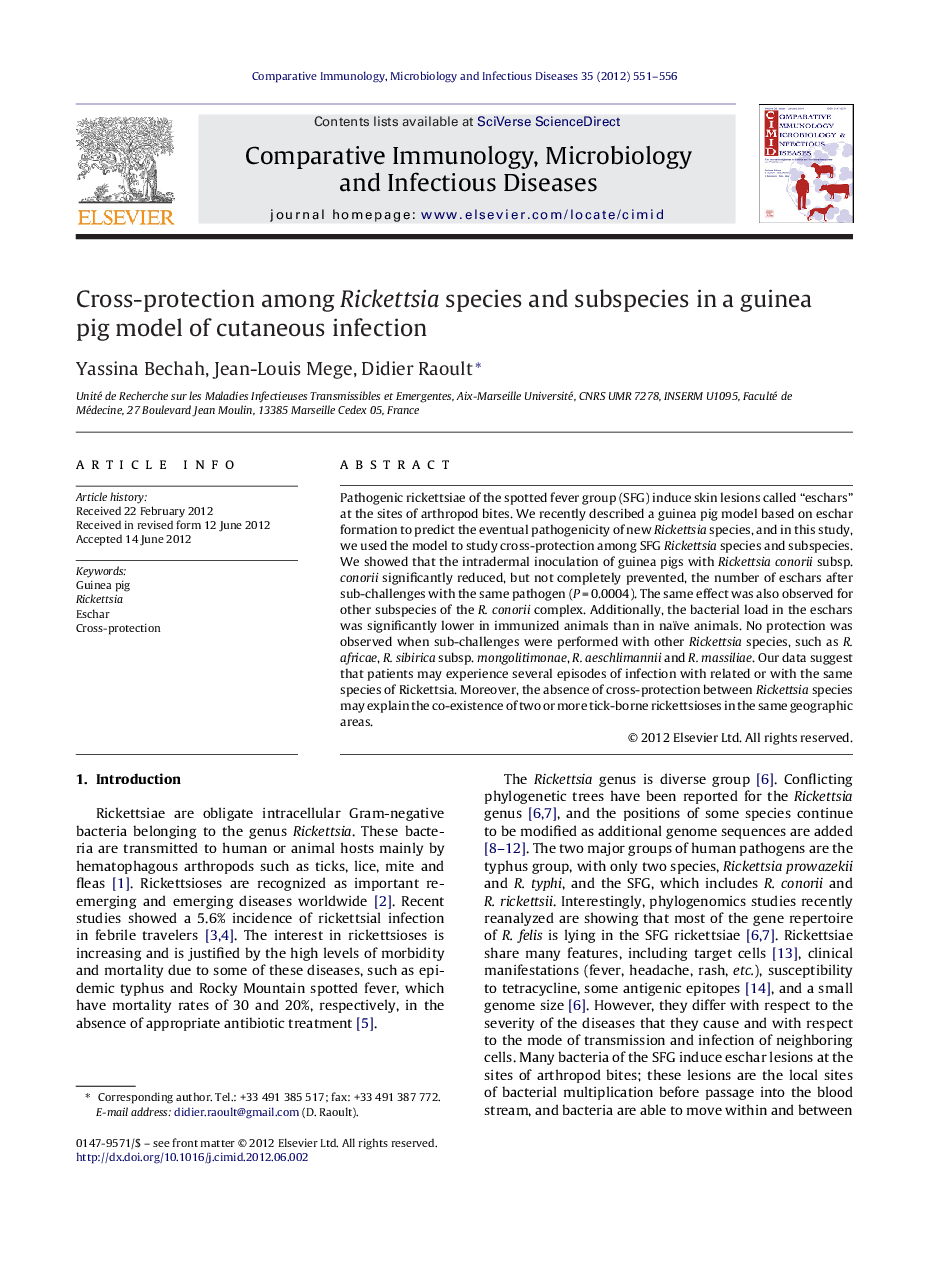| Article ID | Journal | Published Year | Pages | File Type |
|---|---|---|---|---|
| 2428249 | Comparative Immunology, Microbiology and Infectious Diseases | 2012 | 6 Pages |
Pathogenic rickettsiae of the spotted fever group (SFG) induce skin lesions called “eschars” at the sites of arthropod bites. We recently described a guinea pig model based on eschar formation to predict the eventual pathogenicity of new Rickettsia species, and in this study, we used the model to study cross-protection among SFG Rickettsia species and subspecies. We showed that the intradermal inoculation of guinea pigs with Rickettsia conorii subsp. conorii significantly reduced, but not completely prevented, the number of eschars after sub-challenges with the same pathogen (P = 0.0004). The same effect was also observed for other subspecies of the R. conorii complex. Additionally, the bacterial load in the eschars was significantly lower in immunized animals than in naïve animals. No protection was observed when sub-challenges were performed with other Rickettsia species, such as R. africae, R. sibirica subsp. mongolitimonae, R. aeschlimannii and R. massiliae. Our data suggest that patients may experience several episodes of infection with related or with the same species of Rickettsia. Moreover, the absence of cross-protection between Rickettsia species may explain the co-existence of two or more tick-borne rickettsioses in the same geographic areas.
